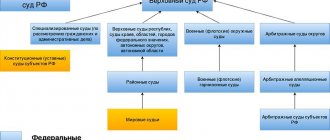Since January 1 of this year, the procedure for providing documents for the consideration of administrative and civil claims has seriously changed and expanded. Now, under certain conditions, any information can be submitted electronically without leaving home. Experienced lawyers know well that such practice has existed in arbitration courts for a long time and has already proven itself. But in the case of procedural documents used to consider civil or administrative cases, the applicant had no choice. He was required to provide only the traditional paper form. Since January 1 of this year, it has become much easier to submit documents to the court electronically, but a number of requirements have also appeared that need to be known and taken into account at the stage of preparing the statement of claim.
To submit a document electronically, the user goes to the court’s website, then identifies himself in his personal account and attaches files for review. It is important to remember that not just any information can be sent this way, and each electronic image must be certified with an appropriate signature.
Who should apply
Either the claimant himself or his authorized representative on the basis of a power of attorney can file a claim in court. This authorized person must have a document confirming his identity, as well as his status (individual, individual entrepreneur, etc.).
Important! Basically, in order to consolidate the powers of the official representative, the power of attorney contains a sentence like “trusted representative of the plaintiff/defendant in all instances.” But in accordance with Article 54 of the Civil Procedure Code of the Russian Federation, some procedures may require filling out a special form. For example, the rules require that certain powers of the principal - filing a statement of claim, filing a counterclaim and full/partial waiver of the requirements of the statement of claim - must be documented separately.
What is the procedure for the plaintiff to send a copy of the statement of claim to the defendant in civil proceedings?
Lawyer Antonov A.P.
When filing a statement of claim, the plaintiff is obliged to send to the defendant and other persons participating in the case a copy of the statement of claim and the documents attached to it, which they do not have (clause 6 of Article 132 of the Code of Civil Procedure of the Russian Federation). In accordance with the position of the Constitutional Court of the Russian Federation, the requirements of Art. 132 of the Code of Civil Procedure of the Russian Federation contribute to the implementation of the principle of adversarialism and equality of parties in the administration of justice (Determination of the Constitutional Court of the Russian Federation dated January 28, 2021 N 96-O “On the refusal to accept for consideration the complaint of citizen Andrey Aleksandrovich Baidin about the violation of his constitutional rights by Articles 132, 136 and part one Article 331 of the Civil Procedure Code of the Russian Federation"). In case of failure to comply with this requirement, the statement of claim must be left without movement, the plaintiff is explained the reasons for leaving the statement without movement and is given a reasonable period to correct the shortcomings (Article 136 of the Code of Civil Procedure of the Russian Federation). Civil procedural legislation provides for the obligation to provide documents confirming the delivery or sending of the statement of claim and its attachments to the defendant, but does not establish the obligation of the plaintiff to send these documents in any particular way. The list of documents confirming the fulfillment of this obligation is also unlimited. In the absence of a receipt, notification of delivery or direction of the statement of claim and the documents attached to it, this circumstance can be confirmed by other documents, which may include a mailing receipt, as well as a cashier's check, which contains the addressee's name and address, postal tracking information dispatches from the official website of Russian Post, as well as information about the direction of registered mail (Decision of the Second Cassation Court of General Jurisdiction dated November 25, 2020 in case No. 88-22753/2020, 9-361/2020, Determination of the Eighth Cassation Court of General Jurisdiction dated January 29 .2021 N 88-1821/2021). Thus, the plaintiff can determine the order of these actions at his own discretion. But, since by virtue of clause 6 of Art. 132 of the Code of Civil Procedure of the Russian Federation, the statement of claim must be accompanied by a notice of delivery or other documents confirming the fact of such direction, the following conditions must be met: 1) a copy of the statement of claim must be sent to the defendant and other persons participating in the case before going to court; 2) the plaintiff must choose methods of referral that involve recording the fact of sending or serving documents. There are two main ways to send and serve documents on the defendant: 1. Sending an internal registered mail item by Russian Post is a generally accepted method of sending a statement of claim and the documents attached to it. In accordance with clause 3 of the Procedure for the acceptance and delivery of domestic registered mail, approved. By Order of the Federal State Unitary Enterprise "Russian Post" dated 03/07/2019 N 98-p, such items are assigned a barred postal identifier, and the sender is issued a receipt. Registered mail items are handed over to the addressee or his authorized representative with confirmation of delivery. However, some courts of general jurisdiction also require confirmation of the contents of the registered postal item, providing the court with not only a receipt, but also an inventory of the contents, as well as a receipt receipt or a tracking report on the item. While leaving the statement of claim without progress due to the failure to provide such documents, the courts indicate that it is not clear from the receipt exactly what documents were sent to the defendant, or whether they were actually served. Recognizing this approach as unfounded, higher courts take into account the presumption of good faith behavior of the participants in the process and proceed from the fact that paragraph 6 of Art. 132 of the Code of Civil Procedure of the Russian Federation does not necessarily require the plaintiff to provide information about the delivery/receipt of a copy of the claim with attached documents by the defendant, but only indicates the need to document the filing of the statement of claim (Appeal ruling of the St. Petersburg City Court dated November 9, 2020 N 33-23220/2020 , Ruling of the First Cassation Court of General Jurisdiction dated 11/12/2020 N 88-24606/2020, Ruling of the Sixth Cassation Court of General Jurisdiction dated 08/13/2020 in case No. 88-17085/2020, Ruling of the Eighth Cassation Court of General Jurisdiction dated 06/29/2020 N 88- 11589/2020). In the Ruling of the Eighth Court of Cassation of General Jurisdiction dated December 11, 2020 N 88-18527/2020, the court indicated that the inventory of the contents of a postal item with a declared value cannot serve as an additional means of verifying the plaintiff’s compliance with the requirements of paragraph 6 of Art. 132 Code of Civil Procedure of the Russian Federation. The presence of an inventory of the attachment does not indicate the unconditional good faith of the sender and the reliability of the fact that he sent to the other party exactly those documents that are indicated in it, since when drawing up an inventory of the attachment, the postal worker does not have the obligation to check the contents of the documents sent by the sender. In accordance with established judicial practice, sending a statement of claim and its attachments to the defendant by registered mail (parcel) is the appropriate way to fulfill the obligation; providing a list of attachments, receipt receipts and tracking reports is advisory in nature and is carried out at the request of the plaintiff. 2. Directing and delivering to the defendant a copy of the statement of claim and its annexes with confirmation of this fact by other documents, for example, if they were delivered personally by the plaintiff, by hand, using courier delivery or in another way. Sufficient evidence may be a receipt or other document that confirms that copies of the statement of claim and its annexes were served on the defendant (Appeal ruling of the Moscow City Court dated July 14, 2020 No. 33-24241/2020). The receipt or other document must include the identification of the defendant, information about the authority of the person who received a copy of the statement of claim and attachments, the date of service and a list of documents received. In the case of using such methods of serving documents, it is important to make sure that the data is sufficient for the court to establish the fact that the plaintiff has fulfilled the obligation provided for in Part 6 of Art. 132 of the Code of Civil Procedure of the Russian Federation (Appeal ruling of the Supreme Court of the Altai Republic dated November 14, 2018 in case No. 33-957/2018). There is no established practice yet regarding sending a statement of claim to the defendant via email. Let us only note that in a particular case this method may be recognized by the court as appropriate. The judge of the first instance (the appellate court also agreed with these conclusions) did not accept the plaintiff’s fulfillment of the obligation provided for in paragraph 6 of Art. 132 of the Code of Civil Procedure of the Russian Federation, screenshot printouts, citing the impossibility of reliably verifying the fact that specific documents were sent to the party to the dispute, as well as the e-mail address belonging to the defendant. However, the cassation court overturned these court decisions as adopted with a significant violation of the norms of procedural law: the plaintiff presented printouts of a screenshot (screenshot) containing information about sending attached files to the defendant, detailed information about the sender and recipient; to confirm the reliability of information about the email recipient - information from the official website of the Federal Tax Service of Russia about the ownership of the email address by the defendant (Determination of the Ninth Cassation Court of General Jurisdiction dated December 18, 2020 No. 88-8611/2020 in case No. 9-186/2020). When filing a statement of claim with the court electronically by filling out a form on the State Automated System “Justice” portal, you must also attach documents confirming that a copy of the statement of claim and attachments has been sent to the defendant. They are provided in the form of electronic images of documents certified by a simple electronic signature or an enhanced qualified electronic signature of the person submitting the documents, or in the form of electronic documents; the court, after accepting the appeal for proceedings, has the right to demand the presentation of the originals of these documents or their copies, certified in the manner prescribed for certification of the relevant written evidence (clause 9 of the Resolution of the Plenum of the Supreme Court of the Russian Federation dated December 26, 2017 N 57 “On some issues of application of legislation regulating the use of documents in electronic form in the activities of courts of general jurisdiction and arbitration courts").
Sincerely, lawyer Anatoly Antonov, managing partner of the law firm Antonov and Partners.
Still have questions for your lawyer?
Ask them right now here, or call us by phone in Moscow +7 (499) 288-34-32 or in Samara +7 (846) 212-99-71 (24 hours a day), or come to our office for a consultation (by pre-registration)!
Where to file a claim
The statement of claim is filed by the plaintiff or his authorized representative, following all the requirements of jurisdiction and jurisdiction. In ch. 3 of the Civil Procedure Code of the Russian Federation, citizens have the right to familiarize themselves with the jurisdictional and jurisdictional rules of cases.
If the claim was filed against an individual, then it is submitted to the judicial authority at the place of residence of the defendant. If at the moment he does not live on the territory of the Russian Federation (also the place of residence may be unknown to the plaintiff), then he files a claim in court:
- by location of his property;
- at his last known place of residence.
If the defendant is a legal entity, then the appeal is delivered to the court, which is located at the location of his organization.
If the defendant in the statement of claim is a representative office or branch of a legal entity, then the document must be submitted to the court at the location of this branch. If both the plaintiff and the defendant agree in advance on the jurisdiction of the case within the framework of the agreement, then in accordance with Art. 32 of the Civil Procedure Code of the Russian Federation, they must act in accordance with territorial jurisdiction.
STATEMENT OF CLAIM FOR DEBT COLLECTION
Document requirements
Documents can be submitted to the court in the form of electronic images, but there is a limitation: the size of each file cannot exceed 30 MB. Each document must be certified with an electronic digital signature (what it should be depends on the type of information being certified). An important requirement: the authenticity of each electronic image must be proven. If the data specified in electronic form is repeated in paper form, this is sufficient. In some cases, an electronic document for the court must be notarized. Remember that the notary is not responsible for the authenticity of the information itself, but only for what he sees on the screen. This confirms the contact details, as well as the identities of the sender and the applicant. In some cases, the court may require a computer technical examination, which is performed at the applicant’s expense. It is for this reason that carefully study the requirements for the electronic filing form and take into account all possible difficulties and restrictions in advance.
The enhanced qualified digital signature used for authentication must be in the format PKCS#7 (Public-Key Cryptography Standard #7).
Procedure for accepting an application
The statement of claim must be submitted to a judicial authority. The number of copies to be transferred is determined by the number of persons participating in the proceedings. The issue of accepting a claim is considered within five days from the date of its receipt.
After the claim is submitted to the court, a decision is made. Possible answers:
- acceptance of claim;
- refusal to consider;
- return to the applicant.
- If the claim does not meet the formalization requirements, it is sent to the applicant for correction.
If the first decision is made by the judicial authority, it will be formalized as a ruling. On its basis, cases are initiated in the first instance.
COURT ORDER FOR DEBT COLLECTION
Request for documents
Public access to some information is directly prohibited. For example, notarial secrets are protected by law, and access to civil registry offices is limited. Sometimes documents are simply refused to be issued, citing internal departmental regulations or ignoring requests.
The petition is drawn up with reference to a legislative act prohibiting free access to documents or refusal of an organization or body. If a written refusal was not issued, evidence of the request or application is required. This is either a copy with an incoming number, or a receipt from the mail.
The place where the document is stored and the address of the organization to which the court will send the request must be indicated.
Documentation attached to the statement of claim
In addition to the claim itself, the applicant must provide a whole list of documents. The papers attached to the statement of claim must confirm all the circumstances set forth in this document. This may include:
- receipt of payment of state duty;
- power of attorney confirming the powers of the trustee;
- papers that confirm the circumstances set out in the claim and serve as the basis for making demands on the defendant. The number of copies is determined by the number of persons participating in the proceedings;
- calculation of the cost of collection. The paper is certified by both the claimant and his authorized representative. The number of copies is also determined by the number of persons participating in the process;
- text component of the regulatory document (if the claimant wants to challenge its content);
- a list of acts confirming the initiation of pre-trial proceedings.
Witness statements
Witnesses in a case are persons who know something about the circumstances of the dispute. They may still be called upon to provide explanations. For example, a notary is asked to provide explanations regarding documents issued or certified by him.
In the application for summons, the party is obliged to inform the court: what information the person can provide, his personal information (full name, residential address).
In practice, the appearance of a witness in court is ensured by the parties; forced attendance does not occur in civil proceedings, despite this possibility from the point of view of the law. Whether or not to agree with the involvement of a witness is up to the court to decide.
Of all the evidence, the words of witnesses are assessed as less significant in comparison with documents.
Grounds that may serve as a reason for refusal
In Art. 134 of the Civil Procedure Code of the Russian Federation provides a complete list of grounds that may serve as a reason for refusing to accept a claim:
- the claim is filed with a court, which should not be involved in its consideration;
- the statement of claim is filed to protect rights by a government agency that does not provide such a right;
- a claim is filed by a person in order to challenge regulations that do not infringe on his rights.
- There is already a valid court decision on the conflict, where the same parties to the proceedings took part, and the grounds and requirements completely coincide.
- The judge's decision to suspend the proceedings came into force. The reason for this may be the acceptance of a peace agreement, as well as the claimant’s refusal of a previously submitted application.
- There is already a valid arbitration court decision on a conflict situation, where the same parties to the proceedings are involved, and the requirements coincide. In this case, the judge refuses to issue the relevant document giving permission to execute the court decision.
The court's decision to refuse is formalized as a ruling.
The act is handed over to the claimant (or sent to his place of residence) within 5 days. Upon receipt of a written refusal, the claimant (in case of disagreement with the result) has the right to file a private complaint. STATEMENT OF CLAIM FOR COLLECTION OF DEBT UNDER RECEIPT
Types of petitions
They are served on a variety of occasions. What requests do the parties make:
- Appointment of examination.
- Interim measures.
- Please exclude evidence from the case file.
- Request for documents.
- About procedural deadlines and limitation periods.
- Calling witnesses.
- Clarification of the requirements and (or) grounds for the claim.
The listed petitions in civil proceedings are typical. During the proceedings, a variety of issues and problems may arise that require court intervention. This position is confirmed by the way the legislation is formulated.
Return of the claim
The claim will be returned to the plaintiff in the following cases:
- the claim was not filed on behalf of the claimant or his authorized representative;
- violation of the order of pre-trial proceedings;
- lack of established documents that confirm the initiation of pre-trial proceedings;
- violation of jurisdiction rules;
- lack of signature;
- submission or signature of a document by an unauthorized person;
- one or more courts are considering a case regarding a conflict between the same parties, the grounds and requirements also coincide;
- the plaintiff’s request for the return of the statement of claim (if the request preceded the adoption of a court decision).
What are petitions and their meaning
One of the rights given by law to a participant in civil proceedings is filing petitions. It is spelled out directly in the law. Petitions in civil proceedings are aimed at resolving any difficulties and questions that arise for a party to the process.
We must remember that the court is a neutral participant in the process and takes the initiative when the law directly indicates this. Otherwise, the parties must be active. You shouldn't rely on the court's advice.
The judicial process is organized quite liberally, and the requirements for procedural documents are minimal. At the same time, ignorance of certain nuances may lead to the court’s refusal to grant the petition or render the result useless. This concerns timeliness of submission and correct wording.
In what cases does the application remain without progress?
The claim may be left without progress if violations were discovered in its design or content. The same awaits statements of claim, to which a complete list of documents has not been added.
The plaintiff will be informed of all violations that were identified during the verification of the application; a certain period of time, usually not exceeding 1 month, is allotted for their elimination.
Persons who filed a claim must apply to the court, which is authorized to consider such documents. The decision will be made within 5 days from the date of submission.
How to submit documents to court electronically?
As stated in the above-mentioned order, today applicants have virtually unlimited opportunities to use electronic documents in legal proceedings. For maximum convenience, a special information system “My Arbitrator” has been created, access to which is available on the website of any court. In order to gain access to your personal account and use the function of submitting a document, you must create and activate an account in the Unified Identification and Logistics System. Experienced users have already managed to evaluate the capabilities of this system, which has successfully proven itself in identifying users on a government services website.
Submission form
Before submitting an application to the court, you need to familiarize yourself with the completed sample and the procedure for drawing up this document. Naturally, the submission form must be in writing. All requirements must be typed or, if this is not possible, written in clear and legible handwriting. The text itself should be as concise, understandable and transparently reflect all the stated requirements.
In order for the court to accept your document for consideration, it must be properly executed. To do this, at the top right we indicate the name of the court to which we plan to submit our petition. Then you must specify the following:
- Plaintiff: Full name and address (here you need to indicate your email and contact phone number).
- Defendant: Full name, address and contact details.
If any organization acts as a defendant, then indicate its name and legal address. You also need to indicate all possible contact information: telephone numbers, emails, etc. If there is more than one defendant against whom you want to sue, then you need to enter all of them into the document in the form of a numbered list: defendant No. 1, defendant No. 2, and so on. For each of them you need to provide information about contacts and location.
What follows is a free-form part in which you need to set out the essence of the claims that served as the basis for filing an appeal to the court. At the end it is necessary to put the date of completion and the signature of the applicant.
Communication with the court
When sending a statement of claim to a judicial authority via mail, the process of judicial consideration of the case may be drawn out. In this case, the plaintiff may have to communicate with the court through correspondence by mail.
To cover all possible options, it is best for the plaintiff to provide his/her full contact information, including mailing address and telephone number. It would be a good idea to provide an additional or mobile phone number, as well as an email address.
Of course, if any problems arise related to the need to provide additional papers, the court secretary may call the applicant, but it is possible that the court will send a letter with such notification by mail, even if there are other contacts of the plaintiff.
The time frame for sending a letter from the court may take a long time and there will simply be no time left to send additional papers to the court. In this case, there is no need to be shy, and you should call the court clerk and explain the situation with the problems that have arisen.
The right decision for the plaintiff would be to write out all the court’s contact information before sending the application by mail, since telephone numbers and addresses can be easily found on the official websites of judicial institutions.
You can file a statement of claim in court on your own, but it is better to take professional help from experienced lawyers.
A sample application to the court for fraud is provided at this link.
Obtaining confirmation of sending and acceptance of documents by the court.
After the system processes the documents, confirmation of sending will be sent to the email specified in the form, as well as to the email associated with your account. The sender will be “My Arbitrator”, the subject of the letter will begin with the word “Sent: <…>”
The court officer will then have to check your submitted documents to see if they meet the formal requirements and either accept or refuse them. On average, this takes from three to eight working days.
After accepting or refusing to accept documents, a confirmation will be sent to the email specified in the form, as well as to the email associated with your account. The sender will be “My Arbitrator”, the subject of the letter will begin with the words “Accepted: <…>” or “Rejected: <…>”.
The grounds for rejecting documents sent electronically via the Internet are contained in clause 4.5. The procedure for submitting electronic documents to the arbitration courts of the Russian Federation (https://my.arbitr.ru/#help/2/11). Among the most common reasons is the lack of a power of attorney; lack of signature; sending documents to a court other than the one indicated in the applications themselves; poor document quality and upside down pages.
Please note that the court’s acceptance of electronic documents does not in itself mean that the documents themselves will be drawn up correctly and will be accepted for production. This is only confirmation of compliance of the application form and the documents attached to it with technical requirements. The compliance of the appeal with the requirements of the law in terms of their content is checked by the judge.
Legal advice:
Sometimes, when submitting the initial document, applicants deliberately do not attach any documents (for example, a document on payment of state fees) in order to be able to “choose a judge.” So, if the judge is, in the opinion of the applicant, suitable, the missing documents are submitted additionally and the case is accepted for proceedings. If they want to “replace” a judge, they submit the same package of documents with a defect again. However, such practices are often perceived by courts as unfair behavior. There have also been cases when documents ended up with the same judge several times. Therefore, before using the given method, carefully weigh all the pros and cons; I didn’t quite understand about replacing the judge
If the documents are submitted by a representative
He needs the appropriate power of attorney. It is presented in the form:
- or an electronic document signed by the EPC of the represented person;
- or an electronic image of a document certified by the EPC of the represented person;
- or an electronic image certified by a simple electronic signature or electronic signature of the person submitting the documents.
Electronic documents are originals. They have the same legal force as paper ones.
Connect to Diadoc
Subtleties of filing a claim to court by mail
After deciding to file a claim by mail, the applicant needs to collect the entire package of documents required for this category of cases. The plaintiff needs to remember what to do and attach copies of the statement in the letter, depending on the number of parties (defendants and third parties).
The content of the application must accurately indicate the details of the judicial authority and information about the parties to the dispute, their residential addresses and telephone numbers. If a fee is required to be paid when filing a claim, it must be paid in a certain amount, based on the price of the claim and the provisions of the Tax Code of the Russian Federation. Payment receipts must be submitted along with the claim.
The value of the claim is the disputed money that the applicant demands to recover from the defendant. The price exists not only in claims of a material nature regarding the reimbursement of the cost of goods or the payment of penalties, it can also be determined based on the amount of compensation for moral damage or the cost of legal services.
When submitting an application by a representative of the plaintiff, you must attach a document on the basis of which he exercises his powers. If the applicant requests to challenge a normative legal act, the text of such published act should be attached.
If there is a possibility of pre-trial settlement of claims, along with the application, evidence is submitted that confirms the implementation of actions aimed at attempting to resolve.
The statement must indicate the plaintiff’s claims and the circumstances on which they are based. Documents and their copies confirming the existence of such circumstances must be sent not only to the court, but also to all parties and third parties if they do not have such information.
The content must include a calculation of the disputed funds if the claim is of a material nature. The text must have links to articles of legislation that give a person the legal right to file claims in this case in accordance with certain grounds.
The plaintiff needs to know that if one important document is missing, the claim may not be accepted for consideration and will have to be sent again by post.
The letter should be sent with a list of attached documents - in this case, the applicant remains with a document confirming the list of documents sent. This will help in the future with court allegations about the receipt of letters that are blank or without certain documents. You can get a sample inventory at the post office or print the form yourself.
Some lawyers offer advice regarding sending a declaration of value letter. At the same time, you should not indicate a high cost, since the postal commission is 4% of the amount; it is enough to indicate the price of one ruble.
When sending a claim by mail, you must enclose the application and a package of documents in an envelope and send it by registered mail or postal parcel with notification to the address of the judicial authority. If the letter contains papers that are valuable to the plaintiff, it is worth declaring the value of the letter.
It is not necessary to send the original documents specified in the list of documents attached to the claim, because losses sometimes occur when sending postal items. It is enough to attach copies of documents, but in the text you need to draw the court’s attention to the fact that the originals will be submitted in person during the preparatory meeting.
If the court accepted the application, it must make a decision on the further fate of the case within 5 days after receiving it.
When you plan to file a claim in court by mail, you can avoid many difficulties and take into account all the nuances by turning to professional lawyers for help. They will help you correctly draw up and send a claim by mail, and the court’s decision will also be sent to the plaintiff by mail.
Will it be possible to do without CEP?
It will not work if the following are filed in court:
- application for provision of evidence (Article of the Arbitration Procedure Code of the Russian Federation);
- application for securing a claim (Article of the Arbitration Procedure Code of the Russian Federation);
- statement on securing property interests (Article of the Arbitration Procedure Code of the Russian Federation);
- application for ensuring the execution of a judicial act (Article 100 of the Arbitration Procedure Code of the Russian Federation);
- a petition to suspend the execution of a decision of a state body, local government body, other body, official (Article 199 of the Arbitration Procedure Code of the Russian Federation);
- a petition to suspend the execution of judicial acts (Articles 265.1, 283 of the Arbitration Procedure Code of the Russian Federation);
- statement of claim, application, appeal, cassation complaint, containing a petition for interim measures (Articles 125, 260, 265.1, 277, 283 of the Arbitration Procedure Code of the Russian Federation).
What to pay attention to if you present documents submitted through Diadoc to the court
They fully comply with the conditions of the new Order as far as signatures are concerned. However, Diadoc does not limit the formats and names of transferred documents (with the exception of invoices, for which the requirements for exchange files are legally approved). Therefore, not every electronic document can be submitted to the court.
For example, a document can be transmitted through Diadoc in pdf format, signed by the EPC, but have a name that does not correspond to the Procedure. You cannot simply change the file name - the document will not be considered the original. Then it can be presented in the form of a paper copy. Another option is to create an electronic image of it: print, scan and sign a simple electronic signature or electronic signature. The Order does not directly provide for this option, but it does not prohibit it either.







